The Kodiak bear is a subspecies of brown bear native to the Kodiak Archipelago in Alaska. This subspecies is particularly notable because of their immense size. Some individuals have even weighed over 1,500 pounds!
Besides being larger, these bears do not greatly differ from brown bears in appearance. Read on to learn about the Kodiak bear.
Description of the Kodiak Bear
Kodiak bears are an incredibly large subspecies of brown bear. As a whole, brown bears usually weigh between 250 and 800 pounds or so. However, male Kodiak bears average 600 – 1,400 pounds or more, and females average 400 – 700 pounds or more. When standing on their hind legs, male bears can exceed heights of 9.8 feet tall. A thick fur coats their entire body, and ranges from dark brown to blonde in color.
Interesting Facts About the Kodiak Bear
These massive predators are one of the most unique brown bear subspecies. Learn more about what makes these bears so unique below.
- Harsh Habitat – Living in the frigid Alaskan wilderness is no cakewalk. Not only are temperatures frigid, but wind chill in an oceanside archipelago can make conditions even more harsh. To combat these harsh living conditions, these bears must develop a thick layer of fat to insulate them.
- Densely Packed – These bears reside exclusively in an area of approximately 5,000 square miles, which is relatively small. This means that the number of bears in any given area can be quite high, and they have much smaller territories than other brown bears. Especially in areas with lots of food, bears can congregate in large numbers.
- Sociality – Being in such close quarters means that Kodiak bears are much more socially complex than other brown bears. In areas with food concentrations as many as 60 bears can live in a single square mile. Rather than wasting time and energy fighting with one another, Kodiak bears have complex social cues to determine dominance without battling.
- Bears and Humans – Despite a somewhat dense population in small areas, bears and humans do not interact very frequently. Most bears attempt to avoid conflicts with humans, and vice versa. Usually, injuries from bears occur just once every couple of years. Most conflicts are due to a human surprising or threatening the bears, leaving food or garbage out to tempt the bears, or the bears attempting to eat game killed by human hunters.
Habitat of the Kodiak Bear
These large mammals live exclusively in subpolar climates, just below the Arctic Circle. The archipelago is in close proximity to the ocean, which provides a variety of food sources.
On the islands, habitats can range from dense forest to icy mountains. Some islands also have flat tundra, hills, streams, and lakes, all of which bears also utilize. In some instances, Kodiak bears inhabit more urban areas, particularly garbage dumps.
Distribution of the Kodiak Bear
The Kodiak bear subspecies ranges only in the Kodiak Archipelago in southwestern Alaska. The islands they live on include Kodiak, Sitkalidak, Afognak, Uganik, Shuyak, Raspberry, and some adjacent islands. This means the bears have a range of approximately 5,000 square miles of islands.
Approximately half of the islands are in the Kodiak National Wildlife Refuge. You will find this subspecies nowhere else in the world, save for some zoos.
Diet of the Kodiak Bear
As with all brown bears, the diet of these mammals varies greatly based upon the season, time of year, and food availability. When they emerge from their dens in the spring, most food comes from newly grown vegetation, including grasses, roots, seeds, and berries. In the summer, the salmon run provides a high calorie source of food.
However, because climate change is causing some berry species to ripen early, some of the bear population is utilizing berries instead of feeding on salmon. This is a great example of how these omnivores will choose different foods based upon what is available.
Kodiak Bear and Human Interaction
Most Kodiak bears avoid interacting with people and stay away from areas where people are more common. Conflicts are rare, injuries rarer, and fatalities even more rare. Most problems begin to occur when bears can find food near, or because of, humans and human activity.
Bears attracted to sites where they can smell and find food in close proximity to humans become used to human presence, meaning they are no longer afraid of humans. This can result in dangerous consequences. Alternately, bears that find carcasses killed by hunters are likely to defend that kill when the hunter returns, also causing conflict.
Domestication
Humans have not domesticated Kodiak bears in any way.
Does the Kodiak Bear Make a Good Pet
No, Kodiak bears do not make good pets. They are extremely large predators that could easily injure or kill you with a single swipe of their paw.
Kodiak Bear Care
In zoos, these large bears need equally large enclosures. They need plenty of space to exercise, and a large water source to swim and play in. Speaking of playing, environmental enrichment is important to keep these bears happy.
Zookeepers give the bears a variety of toys, puzzle feeders, new scents, and more, to keep them mentally stimulated. A varied diet is key for Kodiak bears, and they should receive a number of different fruits, vegetables, and protein sources.
Behavior of the Kodiak Bear
For the most part, these bears are solitary. They will live in areas with other bears close by, and even feed on the same food sources, but they do not remain in social groups. Bears will determine dominance using different noises and body language to avoid fights.
As with other bear species, behavior varies based upon proximity to humans. Bears that live in areas where human population is higher will be mostly nocturnal, while bears in more desolate areas are active during the day.
Reproduction of the Kodiak Bear
Females can reproduce at five years old, and usually only have one litter every four years. After mating, the embryo goes through delayed implantation. This means that it does not begin to develop until later in the year, so that the cubs are born at the best possible time.
The bears will mate in May or June, and the cubs are born while the females hibernate in January and February. The cubs will remain with their mom for three years or more, and the mortality rate for cubs is very high. Most deaths are caused by attacks from adult males, who will cannibalize cubs.

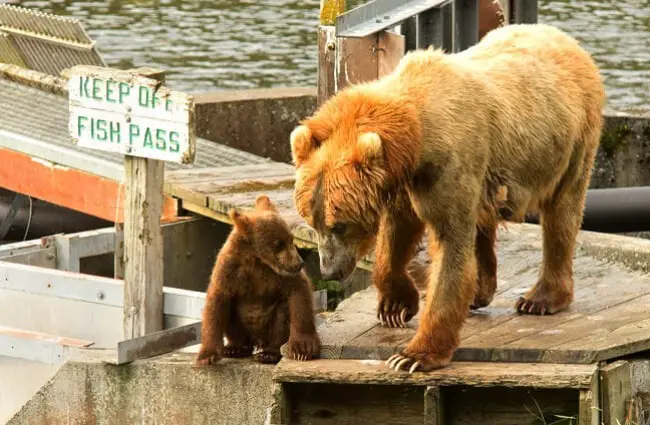
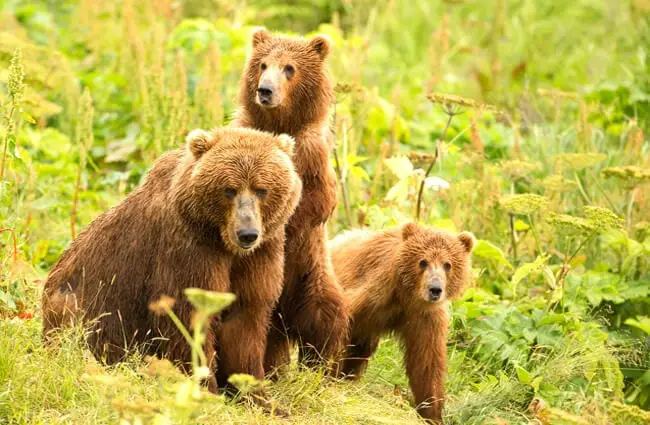

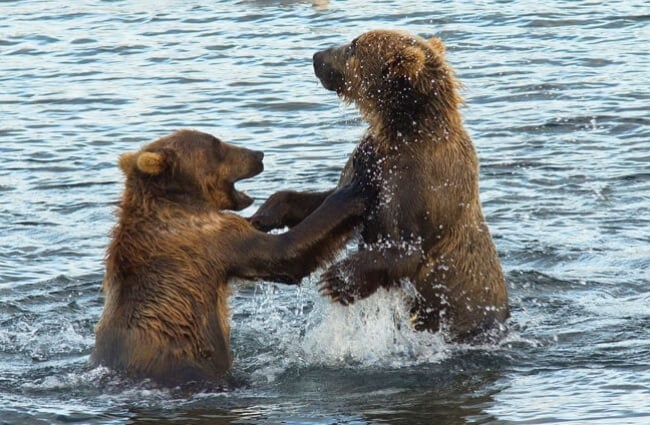
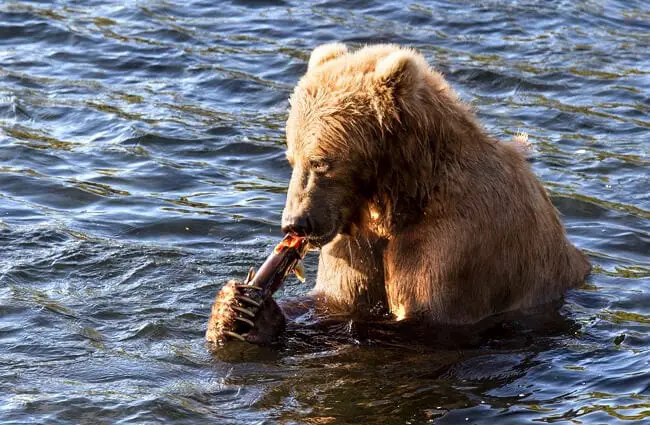

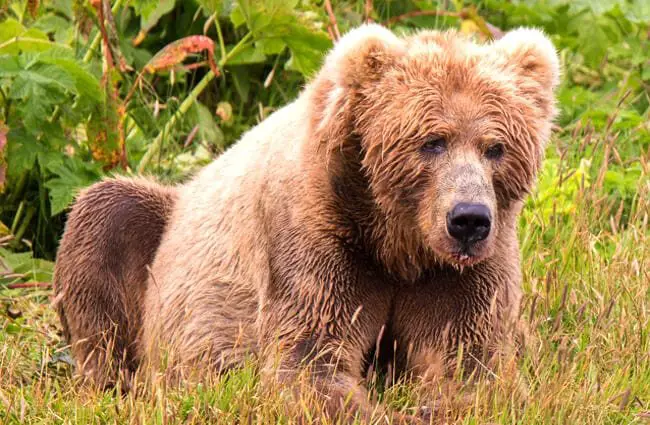


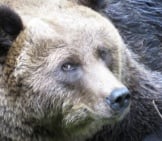
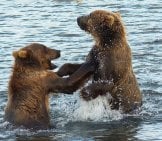
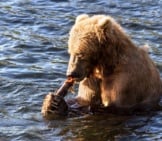
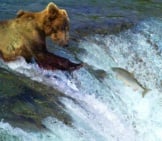
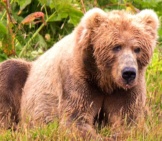
![Red Angus Closeup of a beautiful Red Angus cowPhoto by: U.S. Department of Agriculture [pubic domain]https://creativecommons.org/licenses/by/2.0/](https://animals.net/wp-content/uploads/2020/03/Red-Angus-4-238x178.jpg)


![Red Angus Closeup of a beautiful Red Angus cowPhoto by: U.S. Department of Agriculture [pubic domain]https://creativecommons.org/licenses/by/2.0/](https://animals.net/wp-content/uploads/2020/03/Red-Angus-4-100x75.jpg)

